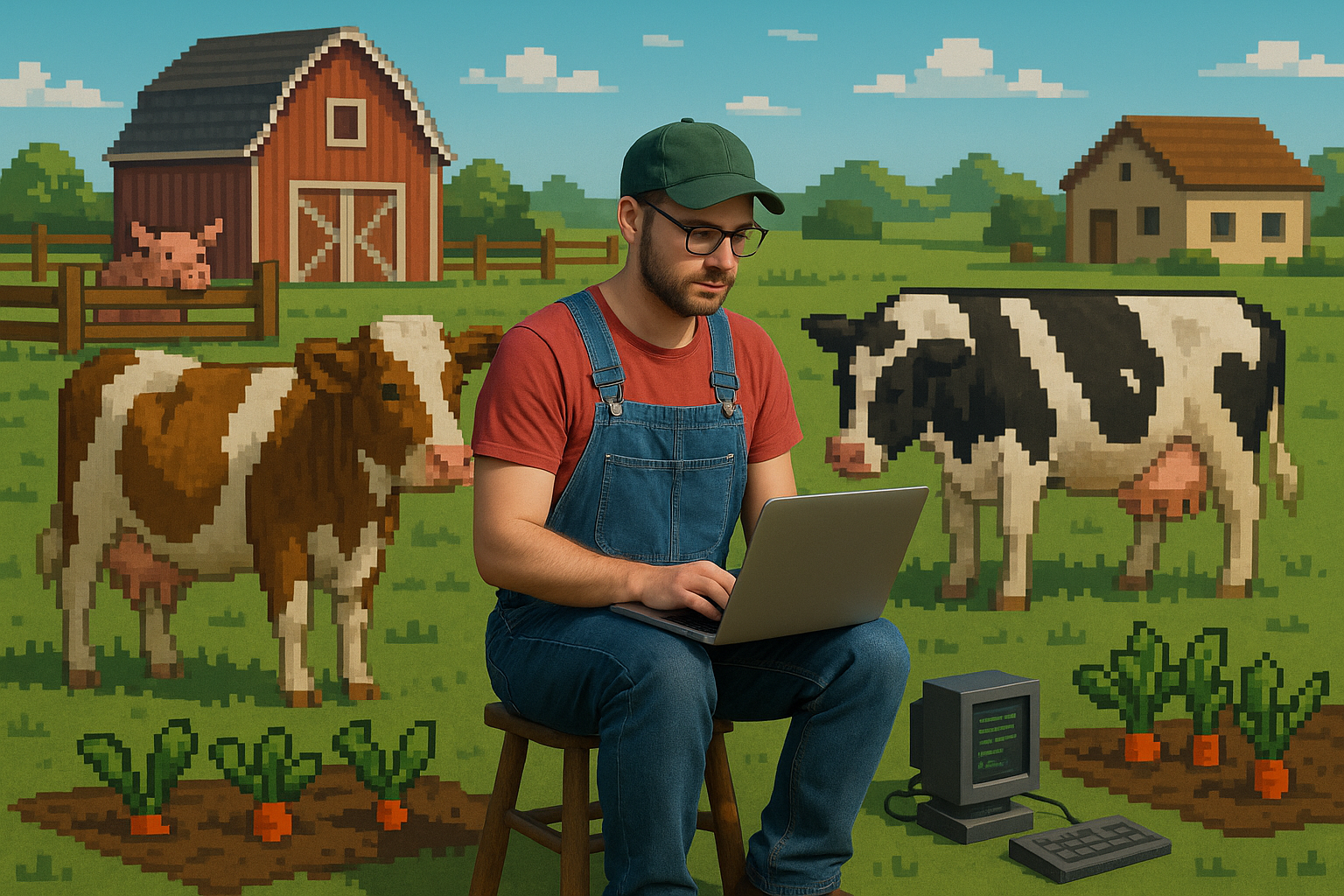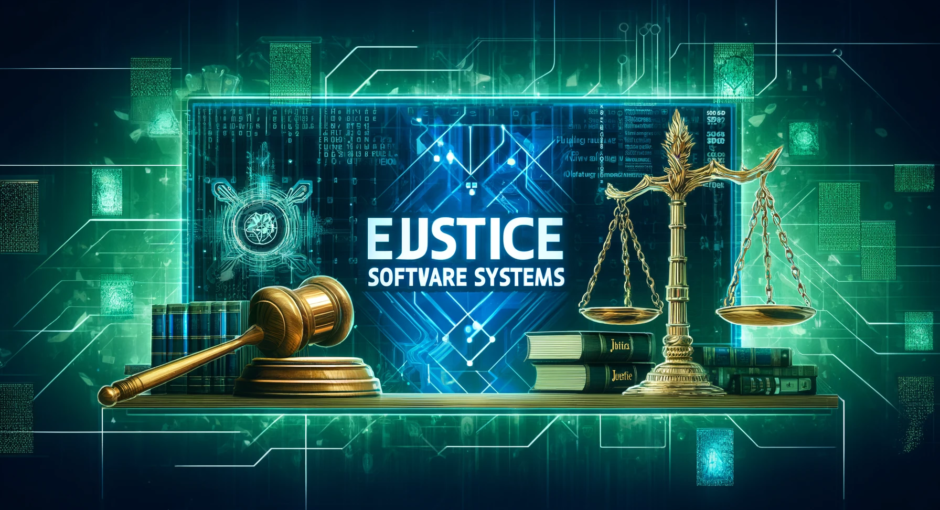Developers built the AI that’s now replacing them — poetic, isn’t it? Explore how coders automated themselves out of jobs, who will survive the shift, and why LaSoft still bets on humans.
Prologue: The Smartest Suicide Note in Tech History
Let’s take a moment to appreciate the poetic genius of the modern programmer. For decades, they’ve been building tools to automate boring stuff: linters, compilers, CI/CD pipelines, deployment scripts. But somewhere along the way, they got ambitious — or maybe just bored — and decided to automate themselves.
The result? AI that writes code, explains code, tests code, and sometimes even does it better than the guy who wrote the original function. It’s like watching a carpenter craft a beautiful wooden chair, then sit on it, realize it’s a guillotine, and calmly pull the lever.
Yes, dear reader, developers have cut the branch they were sitting on — and they did it in perfect syntax, with unit tests, and a Git commit message that said: “feat: end human coding as we know it.”
So, what now? Are we all going back to farming tomatoes and debugging irrigation systems with Raspberry Pi? Or is there still a sliver of hope for flesh-and-blood coders in the age of machine-generated everything?
Let’s dissect this with the respect it deserves — and the sarcasm it has earned.
The Golden Age of Code Monkeys
Once upon a time, in a land before LLMs, writing software was a golden ticket. Didn’t matter who you were — as long as you could spell “JavaScript,” you could escape your hometown, your degree in comparative literature, and your manager at the gas station. The industry welcomed all: former philosophers, failed musicians, and that one guy who learned Python from a meme page.
Tech blogs screamed: “Learn to code!” Bootcamps promised six figures in six months. Twitter bios proudly declared “self-taught dev, building the future.” And recruiters? They hunted frontend juniors like rare Pokémon. It was beautiful chaos.
Meanwhile, corporate devs were swimming in Jira tickets, microservices, and coffee. No one really knew what a “senior” meant, but everyone wanted to be one. The work was messy, the titles inflated, but the money flowed.
Then, somewhere in that chaotic rush, someone asked a fateful question:
“What if we could automate this?”
What followed was the most well-intentioned betrayal in industry history. Developers started building tools to make coding easier, faster, more efficient. They dreamed of assistants. They got replacements.
And so began the slow, well-documented, and GitHub-starred journey… to irrelevance.
The Tools That Buried Us
Let’s meet the suspects — not in a dark alley, but in your IDE.
First up: GitHub Copilot , trained on the collective brain dump of generations of developers. Stack Overflow threads, public repos, your abandoned side project from 2017 — all quietly scraped and digested. Now it completes your code before you even finish your thought. Helpful? Absolutely. A little creepy? Also yes.
Next: ChatGPT and friends. They don’t just write functions — they explain them in plain English, write tests, refactor codebases, and even handle your passive-aggressive commit messages.
You spent five years learning how to write “scalable, maintainable” code — and now a chatbot does it for free, in 2 seconds, and in better grammar than your senior lead.
Don’t forget AutoML, low-code platforms, and the rising wave of no-code AI plugins. Why bother hiring a dev when a founder can just prompt a tool:
“Build me a SaaS to disrupt the pizza delivery industry. Make it crypto-compatible.”
All these tools are miracles of engineering — built largely by engineers. Which makes the irony hard to ignore: they didn’t just automate the boring parts. They automated the valuable ones. Code generation, bug fixing, documentation — the holy trinity of job security — now done faster, cheaper, and with 0 bathroom breaks.
In short, developers didn’t just build the system. They trained it, deployed it, and gave it permission to compete with them.
And just like that, the junior dev job became the new unpaid internship.
Who Will Survive?
Not all developers are doomed — just most of them. Let’s be honest: some roles were already hanging by a thread, and AI just came with the scissors. But others? Still standing. For now.
Let’s break it down:
🚨 High-Risk Zone
These are the canaries in the code mine:
- Junior devs writing CRUD apps
- Freelancers doing WordPress tweaks
- Anyone whose GitHub profile looks like a tutorial repo graveyard
Their crime? Being predictable. AI loves predictable. It thrives on it. It was trained on it. If your job is “take spec, add form, connect button” — a language model is breathing down your neck. And it doesn’t bill hourly.
⚖️ Medium-Risk Zone
- Mid-level devs doing backend APIs, database queries, repetitive SaaS features
- Fullstack generalists with no clear specialty
- People who still Google “regex not working”
These folks might hang on a while — if they adapt. Use AI as a partner, not a rival. Become faster, more efficient, more valuable. Learn to supervise the machine instead of competing with it.
“Prompt Whisperer” might sound ridiculous today. So did “YouTube Creator” once.
🛡️ Low-Risk (for Now)
- Architects who design systems AI doesn’t understand
- Devs who deeply know a client’s business and can solve real problems, not just write code
- Anyone who can talk to humans and machines without causing production outages
In short, coders who can think like consultants. Because AI can write code. What it still can’t do? Justify it to a pissed-off stakeholder.
At LaSoft, we’ve always bet on this last category. We’re not just syntax slingers — we help businesses solve problems. If you need someone to translate “I want an Uber for goats” into a working platform… that’s where we come in.
Plan B: Farm, Flee, or Pivot
So, what’s a developer to do when the compiler of fate throws a deprecation warning on your entire career?
Let’s explore your options — now that “keep coding and hope no one notices” is no longer a viable strategy.
🌽 1. Go Full Neo-Luddite: Grow Cabbage, Not Code
A surprising number of tech folks are romanticizing farm life. “At least AI can’t milk a cow,” they say, before realizing cows don’t run on Docker.
Yes, returning to the land sounds noble — until you discover that chickens are mean, weeds are relentless, and you can’t Ctrl+Z your failed tomato harvest.
Still, in a world of job instability and synthetic intelligence, the idea of real food and real labor starts to feel oddly futuristic.
“Today I deployed compost. Tomorrow I scale up zucchini.”
🏃 2. Run to the Next Buzzword: Prompt Engineering
Why write code when you can write prompts that write code ?
It’s 2025’s hottest fake job. The skillset?
- Knowing how to describe what you want
- Taking credit when AI delivers
- Blaming “model hallucination” when it doesn’t
Spoiler: this won’t be a safe haven forever. As AI gets better, even prompt engineering might go the way of Flash animation. But hey, ride the wave while it lasts.
🧠 3. Evolve: Become the Human That AI Can’t Replace
This isn’t some motivational poster. It’s basic economics.
AI is great at tasks. It’s still terrible at responsibility .
Clients don’t just want code — they want someone who:
- Understands trade-offs
- Knows when to challenge a bad idea
- Can say “no” to features that will destroy the roadmap
In other words, become someone who can think upstream. Business logic. User empathy. Strategic judgment. All the messy, unstructured stuff AI still can’t do — because it doesn’t understand why the product exists in the first place.
So yes, you can grow vegetables. Or learn to whisper to transformers. But the real play? Become irreplaceable not by being faster, but by being wiser.
Why It’s Not Over (Yet)
Let’s take a breath. Yes, AI is faster than you. Yes, it works weekends. Yes, it’s terrifyingly good at writing boilerplate code and making you question your career choices.
But no — it hasn’t won. Yet.
Here’s why the human developer still has a shot.
🤖 AI is smart — but not that smart
Give it a clean task? It shines. Drop it into a 10-year-old codebase written by three different contractors and a coffee-fueled intern? It panics. Ask it to integrate five systems, each with undocumented APIs and two angry stakeholders? It dies inside — metaphorically, of course.
🧩 AI doesn’t understand context — you do
It can guess what the code does. You know why it does it, who uses it, and what will break if you touch that one file that everyone’s afraid of.
That’s not just knowledge — that’s institutional memory . You’re not a dev anymore. You’re a living legend with Git access.
🧠 AI doesn’t have judgment
It can give you 10 ways to solve a problem. But it won’t tell you which one makes sense for the budget, the timeline, or the fragile ego of the product manager.
AI doesn’t read the room. You do.
🛠️ AI still needs handlers
Call them prompt engineers, AI supervisors, augmented devs — whatever. The truth is, every “AI-built” system still has human fingerprints all over it.
Because at the end of the day, when things go sideways — and they will — someone’s got to stand there and say:
“Yeah, sorry. That was us. Not the model.”
So no, the dev isn’t dead. But the definition of a developer is changing. Less typing, more thinking. Less implementation, more interpretation.
Those who adapt will still have seats at the table — possibly fewer keyboards, but definitely more coffee.
What LaSoft Believes (and Does)
We’ve watched this shift unfold in real time — and we’re not panicking. Why? Because we never sold lines of code. We sold clarity, trust, outcomes.
At LaSoft, we’ve been using AI where it makes sense:
- speeding up documentation,
- generating boilerplate,
- automating the mindless stuff no developer will miss.
But our core value? That still comes from humans — the kind who understand messy requirements, changing priorities, legacy systems, and business goals that don’t fit in a prompt window.
We don’t just “build software.” We solve business puzzles, translate chaos into clean architecture, and make sure the end product actually helps someone do their job better. That’s not something you get from a model. That’s experience, judgment, and plain-old human stubbornness.
So yes, AI is here. And it’s not going anywhere. But we’re still here too — and we’re not handing over the keyboard just yet.
Need a human (still)?
Talk to LaSoft before your next sprint gets auto-generated by a bot with commitment issues.


